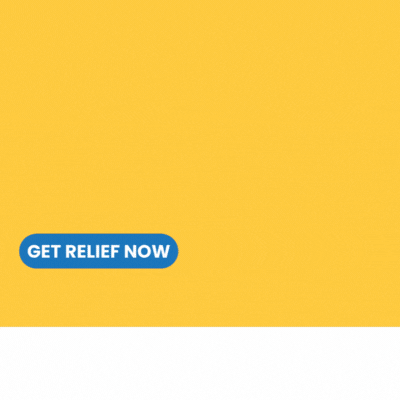By Jack Cumming
The French Philosopher, Bernard-Henri Lévy, has just published a book that attributes our erratic response to the hazards of the pandemic to what he calls an “age of madness.” The rules by which senior living providers are bound are also erratic as they vary wildly from one jurisdiction to another.
Basic Pandemic Rules
In the midst of this regulatory chaos, three rules have evolved: (1) limit the size of gatherings (ten people are most often cited); (2) maintain a safe distance (six measured feet is a new virtual wall); and (3) wear a mask (you protect others by your behavior). Other rules apply specifically to senior living, e.g. no visitors, etc.
Rules like these lead to a compliance mentality. Providers may conclude that they can’t be held responsible or liable if they just follow the orders from officialdom. For those of my generation, that premise, while seemingly valid, triggers memories of the excuses that we heard after World War II ended in Europe. The most common defense then was, “We were just following orders.” Compliance is a necessary response to government, but it should not be considered sufficient.
Reason and Commonsense
As thinking human beings, we are called to bring reason to the situations we confront every day. In law, legal competence generally means that a person has the mental capacity to weigh the pros and cons of a decision and to make a reasoned choice. That competency standard becomes more difficult when confronted by the uncertainties of something like COVID-19.
It’s called the novel coronavirus for a reason. The novelty lies in the lack of precedents to inform our knowledge. In short, we haven’t fully mastered the science, and we are learning from experience – often sad, tragic experience – as the pandemic unfolds.
What then, as leaders, are we required to consider when guiding others through the pitfalls of an uncertain science? Administrators can simply follow the rules of their superiors, whether they are organizational superiors or political authorities. However, those rules may not always be sufficient or even well-understood. This challenges our individual responsibility when we are in a position of authority.
Right now, the absence of a clear understanding is the principal challenge to the seeming clarity of the three rules above. We see the result of that absence in the continuing rise of contagion in many parts of the United States way beyond what has been achieved in other cultures which are more conformist.
Interpretations
The first questionable “interpretation” is the conclusion that “I don’t need to wear a mask if I come no closer than six feet to other people.” Another “interpretation” is, “I don’t need to worry if I’m just among family and friends whom I know.” Or, more troubling is the conclusion, “I’m young and want to have fun, so it won’t be so bad if I get the disease.” At the far end of the interpretive spectrum is the manifesto, “We have a constitutional right to comply or not to comply as we choose.”
Is this lack of caution “madness” as Bernard-Henri Lévy would term it? For senior living, is it sufficient to just comply with directives, if that means that youngsters can come to work with simply a quick temperature check to see if they are symptomatic? Might those youngsters have been in party mode while off work? What of residents who go to visit with their families and then return to their senior living residence? How do we interpret the evolving science to be sure that our actions are sufficient to keep those in our trust safe, secure, and free from exposure?
Evaluating Risk
We can start by using general reasoning, aka commonsense, to break down even the high end “rules”. For openers, it’s obvious that limiting the number of people in a gathering is of no avail, in and of itself, if one of the people is unknowingly infected. Even two people coming together in a space – even a very large space – can lead to contagion if a hapless droplet, an aerosol in scientific jargon, finds its way to lodge in the uninfected, bringing the virus to a new home and a new victim.
Moreover, social distancing is only effective if it is absolute, and it’s not. The evolving science has made it clear that six feet is not some magic wall of protection. In conversation, people move forward to emphasize their points. When they speak with force, the six-foot barrier is easily pierced.
Lastly, masks are only effective if they have the density to block transmission, and even then only if people wear them fully covering their nose and mouth. We’ve all seen those who think that a chin worn mask meets the compliance test. In short, we are at risk if we rely on these proclaimed “rules” to keep us safe.
Compassion and Compliance
For senior living, the no visitors “rule” is the most challenging dictum. Compassion makes us want to allow family members to be able to support their loved ones. Moreover, we know that staff come and go regularly. As one caregiver was heard to say recently, “Why am I blessed to come and go, and to entertain these vulnerable people, while those they love and who love them are blocked?” Why indeed? One memory care provider gave a wife a part-time job and declared her essential so that she could visit her spouse. Wouldn’t it be wonderful if regulations were less reactive and coercive and were more proactive and responsive?
Still, our nation and our senior living industry are now under assault by a novel virus. We don’t know its full impacts. We don’t know what lasting effects infection may bring. As a personal aside, I had polio as a child, and only now do I have symptoms that I try to keep at bay by exercise. Aftereffects from an infection can only become manifest many years later. So what is the reasoned response to uncertainty? In logic, we call that “the benefit of the doubt.” How do we resolve doubt when the response requires treating a potentially hazardous uncertainty as though it were known to be a reality? The human and economic consequences, and the unpopularity of such a “safe” resolution, can be devastating for social workers, business people, and politicians alike.
Benefit of the Doubt
Nevertheless, under the prospect that the unknown foe is a deadly foe, our most compelling emotion has to be one of fear. Fear counsels caution and a wise defense. Heroes confront fear with courage, while others cower in denial or, worse, panic. Our heroes steady the response dispelling the twin perils of denial or panic. For something as pervasively ubiquitous and as unseen and unperceived as a virus, the safest course is to avoid contact and to maintain an impervious bubble. Compassion makes us want to let down our guard. Confinement fatigue makes us want to hug and touch. The battle, though, goes to those who are best able to stay the course and to outlast the foe.
The virus will be defeated. It’s only a matter of time. In the meantime, we need to safeguard ourselves and those in our care. This calls for a higher order of trust and stewardship than most of us have ever had to maintain at any time in our lives.
It’s now obvious that the politicians who manage the levers of government don’t have the answers and that many don’t want to be guided by reason. It is, therefore, for us, the people, to take responsibility where we live and work. It’s for those with the responsibility for the most vulnerable among us to ensure that they stay safe but cherished. Let us not relax the vigilance for which senior living workers are increasingly recognized.
Heroes Among Us
Those who work in senior living, those who care for the vulnerable, those who put safety first, those who risk themselves and their lives in the process, are heroes. We hold you all close in our hearts and prayers and wish you Godspeed through this terrifying time for our nation, our culture, and our world. God bless us, every one.
For those who want to probe the intricacies of complex philosophical dialogue, Bernard-Henri Lévy’s book, The Virus in the Age of Madness, can be found by clicking on the title.





